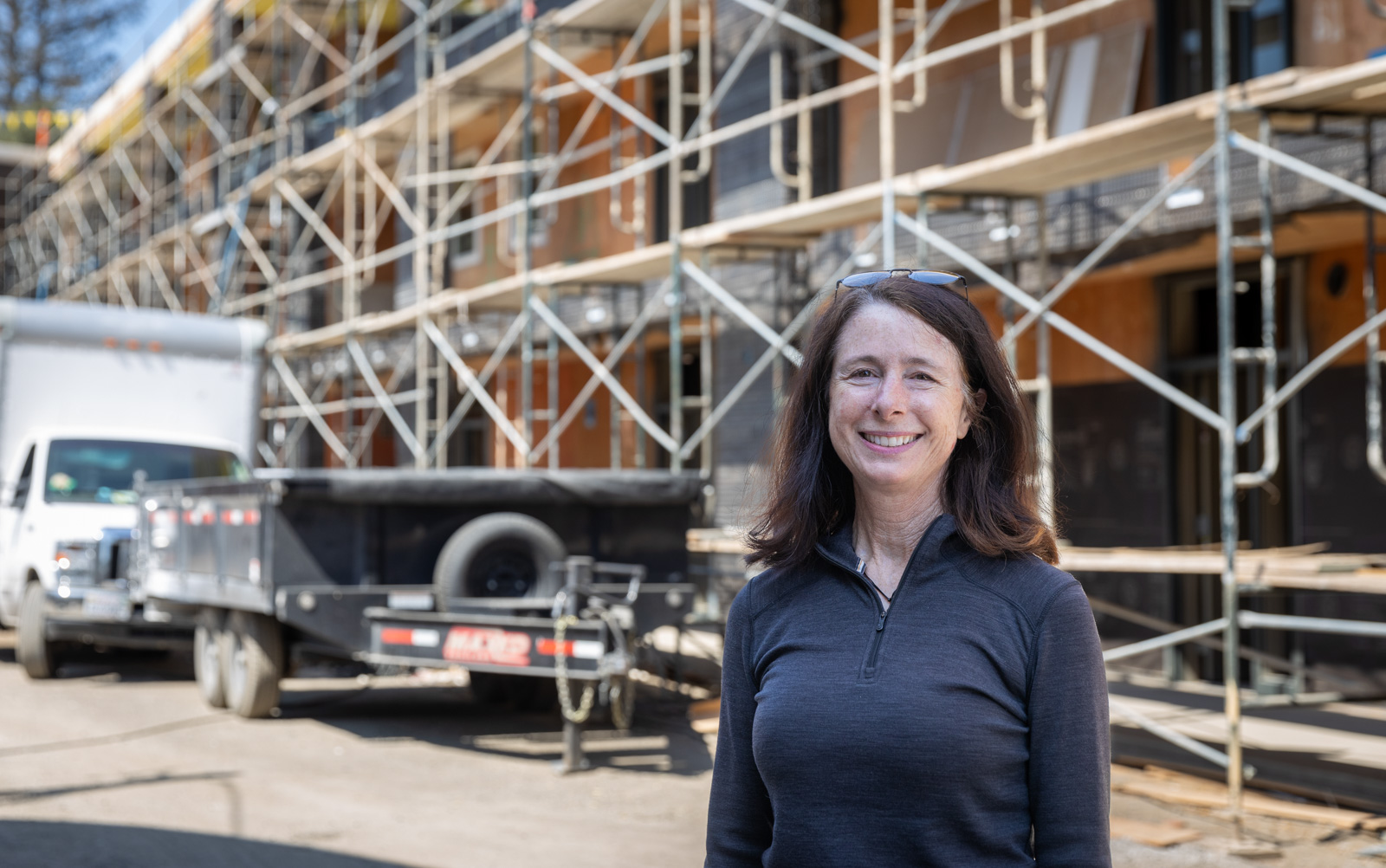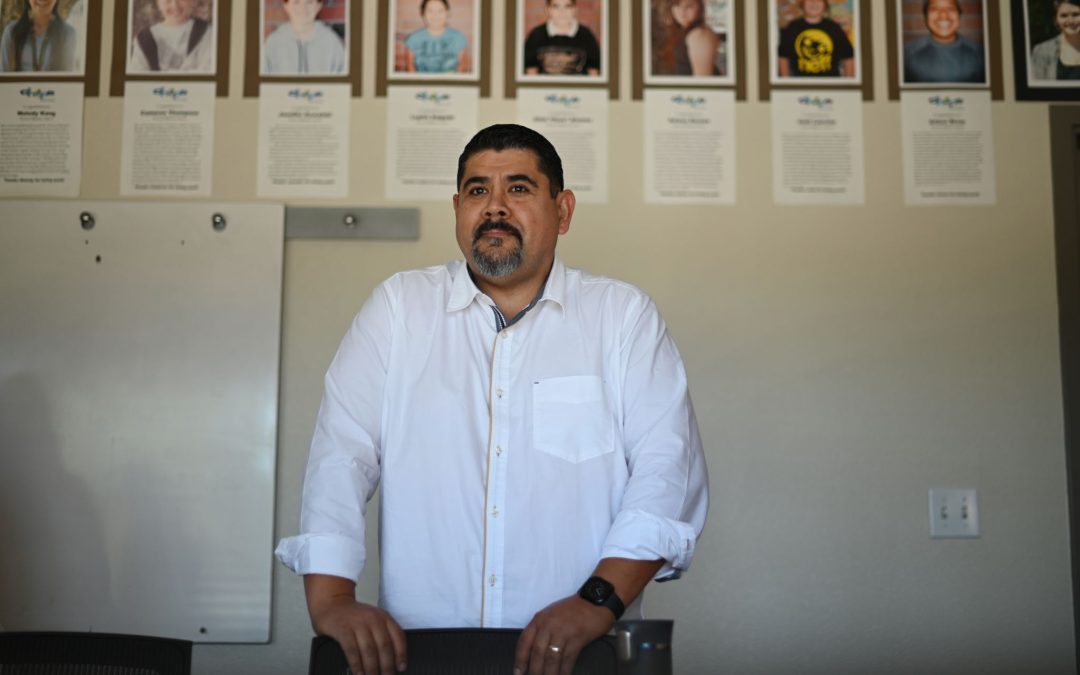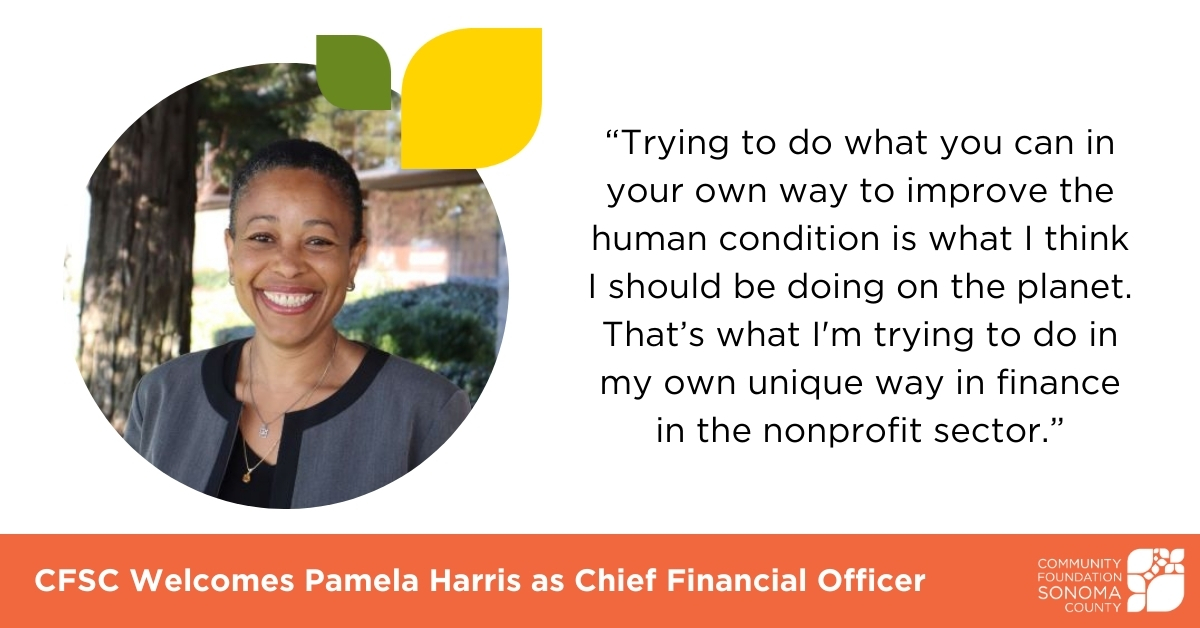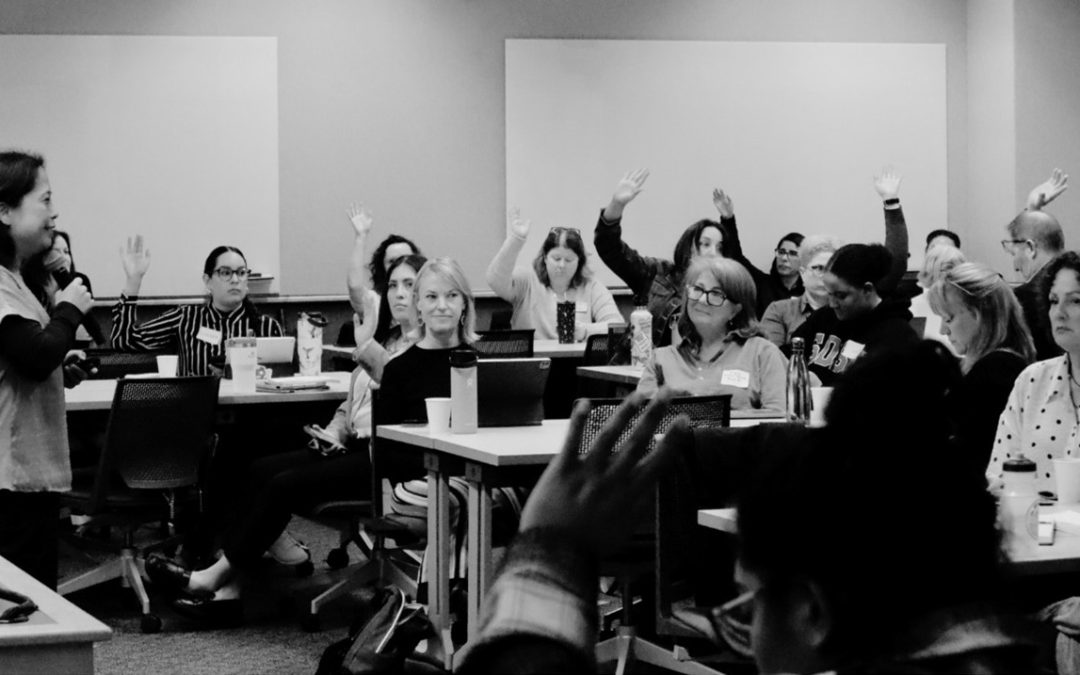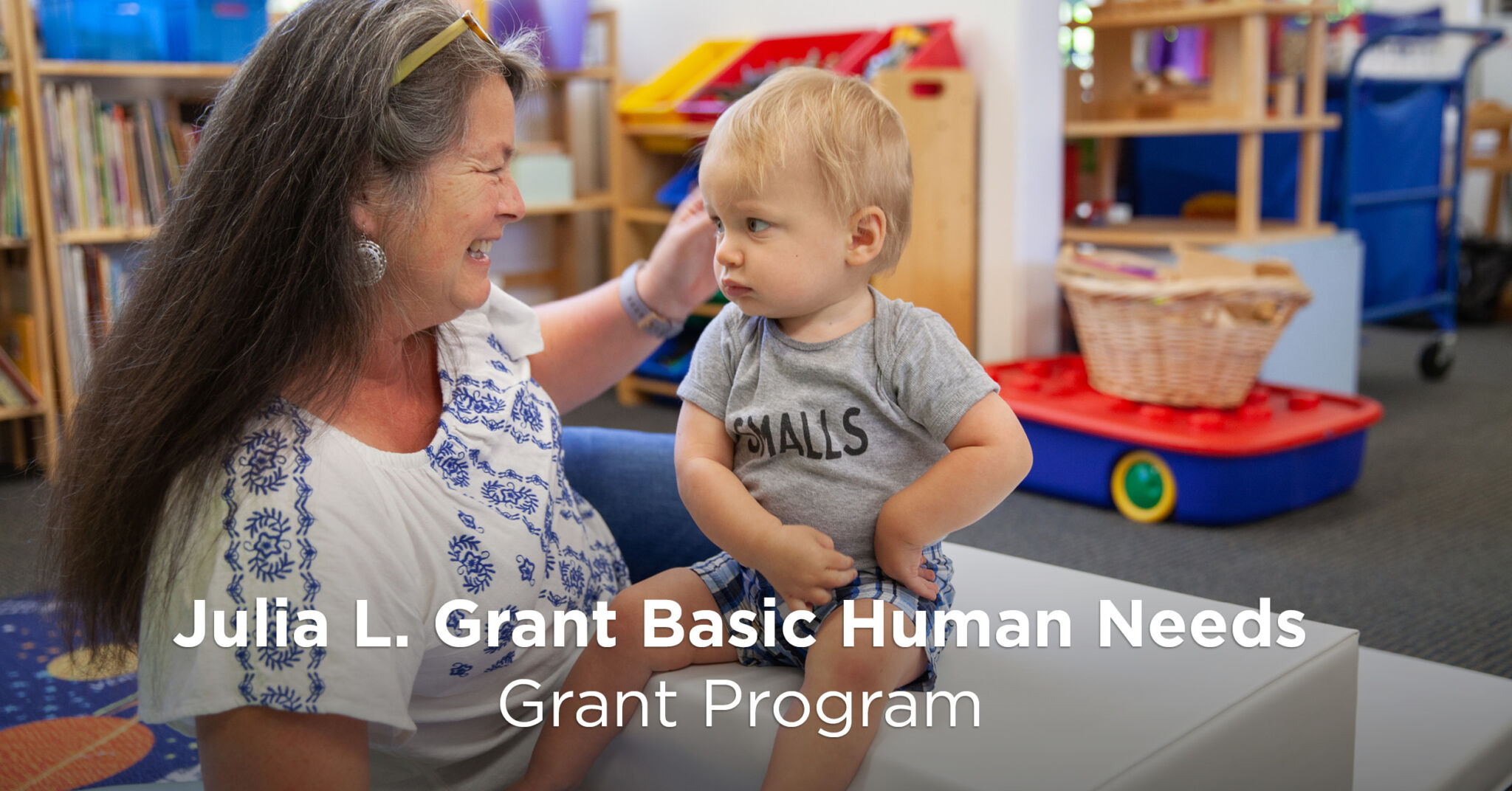Californians continue to cope with the impact that fires have on our communities, particularly when it comes to housing issues. After the October 2017 fires in Sonoma County, many local organizations launched into action to address the loss of thousands of homes in Santa Rosa, during a time when the city was already dealing with a housing shortage. One such organization, which was founded in the aftermath of those disastrous fires, is the Renewal Enterprise District, or RED.
“It really brought the City of Santa Rosa and the County of Sonoma together to look at how to address the preexisting housing crisis at the same time as rebuilding and recovering and becoming more resilient in the context of wildfires,” says RED Executive Director Michelle Whitman. “The elected officials that sit on my board, they’ve really stuck their neck out to do something innovative and more creative than what normally happens in the housing space.”
The creative solutions at RED go beyond simply replacing lost homes with new ones; their work includes ensuring that new housing is high- to mid-density and transit-oriented in a way that will positively impact the economy, reducing greenhouse gas (GHG) emissions, improving quality of life, and preserving the health and well-being of Sonoma residents.
RED is taking a systems approach to its programs, examining public policy through the lens of regionalism. Instead of just addressing housing prices that Santa Rosa or the County of Sonoma has in their own jurisdictions, for example, Whitman says that RED looks at it as one larger system to come up with regional solutions.
“Housing shortages in Santa Rosa have an impact on the greater county and even on our region. And some problems are just too big to address as one jurisdiction in your silo,” says Whitman. “Housing is one of those issues that is really well served by a collaborative, interdisciplinary, inter-jurisdictional approach.”
RED works in partnership with organizations like Generation Housing and local city and county governments, who Whitman says have been critical to ensuring funding for local housing development programs.
Yet, even the best of efforts can sometimes hit roadblocks, and one issue RED has had to address is funding. Whitman says that projects that are in the pipeline in Santa Rosa are ready to build, but they can’t complete their financing; many get within about 90% of the complete budget. Another issue is that there is no established market for dense, infill housing in downtown Santa Rosa or other planned urban areas.
“Because we don’t have ten-story residential buildings in downtown Santa Rosa, those projects are in a holding pattern looking for that last 10%,” she says. “But the banks, traditional sources of financing for multi-family housing development, won’t fully fund the projects because, like I said, there are no comparables downtown.”
However, Whitman says the city and the county streamlined the project approval process, ensuring that more housing can be built to address the shortages we’re seeing locally. They’ve done things like lowered fees and shortened the timeline that it takes to get a project approved, and RED has made great strides in working toward these housing solutions.
Their first round of loans in the amount of $20 million came from the City of Santa Rosa and the County of Sonoma’s PG&E fire settlement. These funds are positioned to finance roughly 10% of the total cost for four to five higher-density developments. And that will leverage $180 to $220 million in additional project investment from other sources. The $20 million will jumpstart the production of between 400 and 500 new transit-oriented housing units.
“We had all of the community meetings and listening sessions, and the community engagement was really robust after the 2017 fires. It’s great to finally be to the implementation piece of this,” says Whitman. “Where we are really stuck right now is solving the developer math problem, which is that 10% financing. But I think we’ve made good progress on the entitlement process, the approval process.”
One of the innovative developments that is currently moving forward is Roseland Village, or Tierra de Rosas, on the west side of Santa Rosa along Sebastopol Road. RED conducted GHG reduction calculations for the project and helped get $34 million in state funding for last year. Whitman says the California Air Resources Board’s (CARB) Air Quality Cost-Effectiveness Calculation Tool estimates that the emission reduction for this project is about 69,000 tons of GHG reduced from the environment. Some of the resources they received are being used to help fund a winter extension bus to the SMART Train station. This will result in a reduction of vehicle miles traveled of over 367 million miles over 40 years.
“That leads to savings of over 10.4 million gallons of fossil fuels. This is an affordable housing development, and all of the GHG emission reductions and lower vehicle miles traveled hits the bottom line for these households,” says Whitman. “It has travel cost savings of over $251 million for local residents. We think, ‘Oh great, GHG emission reduction!’ Well, when people are driving around in their cars, burning gas, that’s money out of their pocket. It really does put money back if you can reduce their reliance on their automobile.”
When asked how she’d like to see Sonoma County’s housing a decade from now, Whitman says it is crucial that we be climate-smart and disaster resilient when building and to build up, not out.
In a recent presentation to Community Foundation, Whitman pointed out that “If we can get this right, we can build a community where housing is foundational to widespread, shared success and the qualification of equity as an outcome.”
“And the dream is,” she adds, “that we have enough housing at all levels of affordability for the residents of this county.”
Story by Dani Burlison

